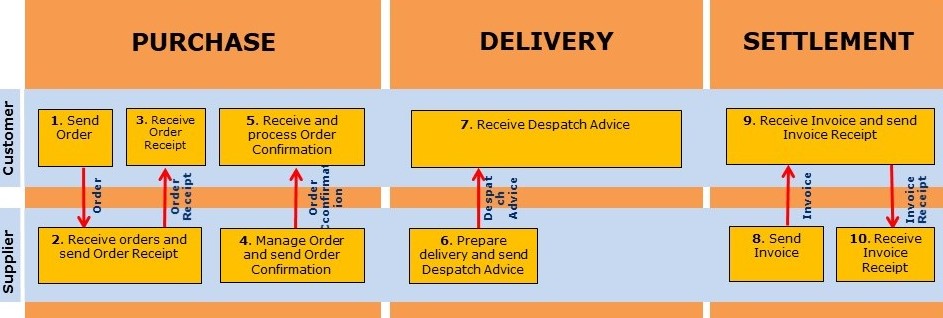Use of EDI in the retail trade
EDI – Electronic Data Interchange – is used in the retail industry to exchange commercial documents like Order, Order Receipt, Order Confirmation, Despatch Advice, Invoice and Invoice Receipt.
EDI can be performed in various ways, from fully automated processes both at customer and supplier, to web solutions where information is registered manually.
EDI is used for all distribution types.
Overview of EDI messages and in which processes they are used

Which EDI messages to use will vary with the distribution type.
An overview of this, along with deadlines for when the messages are to be sent, are described in EDI message, type of distribution and deadlines.
Before using EDI, it is necessary to clarify which messages to be used, message formats, exchange methods, electronic message addresses, etc. This documented the EDI Exchange agreement.
This document also specifies other bilateral issues related to the exchange of EDI messages.
To ensure that both parties and all business functions are familiar with all bilateral agreements, it is crucial that the EDI Exchange Agreement is used actively.
How to get started with EDI is described in Implement EDI in the retail trade.
In order to start using EDI, trading documents must be translated into an EDI format.
The following formats are available:
- Message description EANCOM for order, order receipt, order confirmation, Despatch Advice, invoice, invoice receipt
- Message description XML for order, order receipt, order confirmation, Despatch Advice, invoice, invoice receipt
Revisions of the EDI formats, is documented in Change log current version vs. past versions
